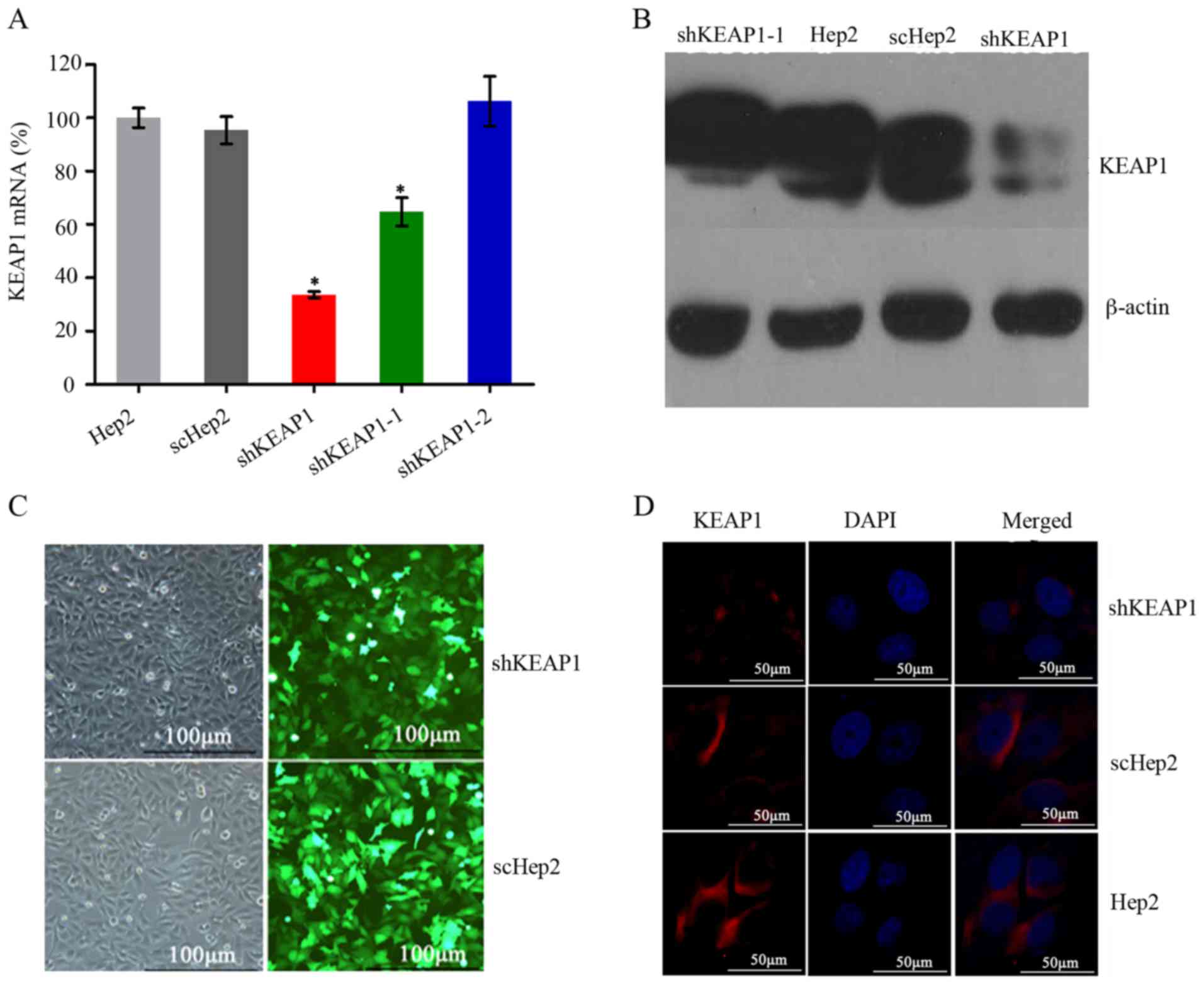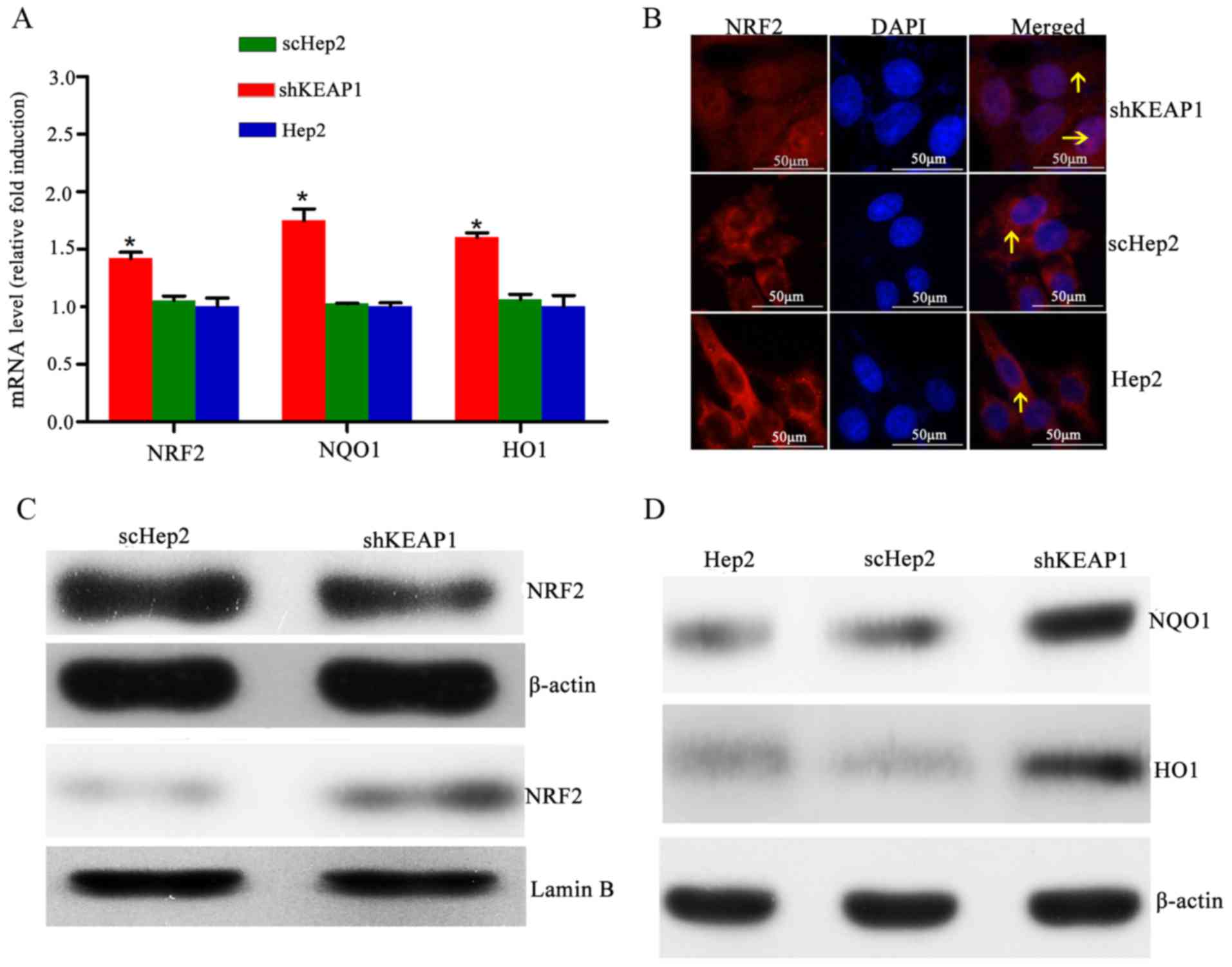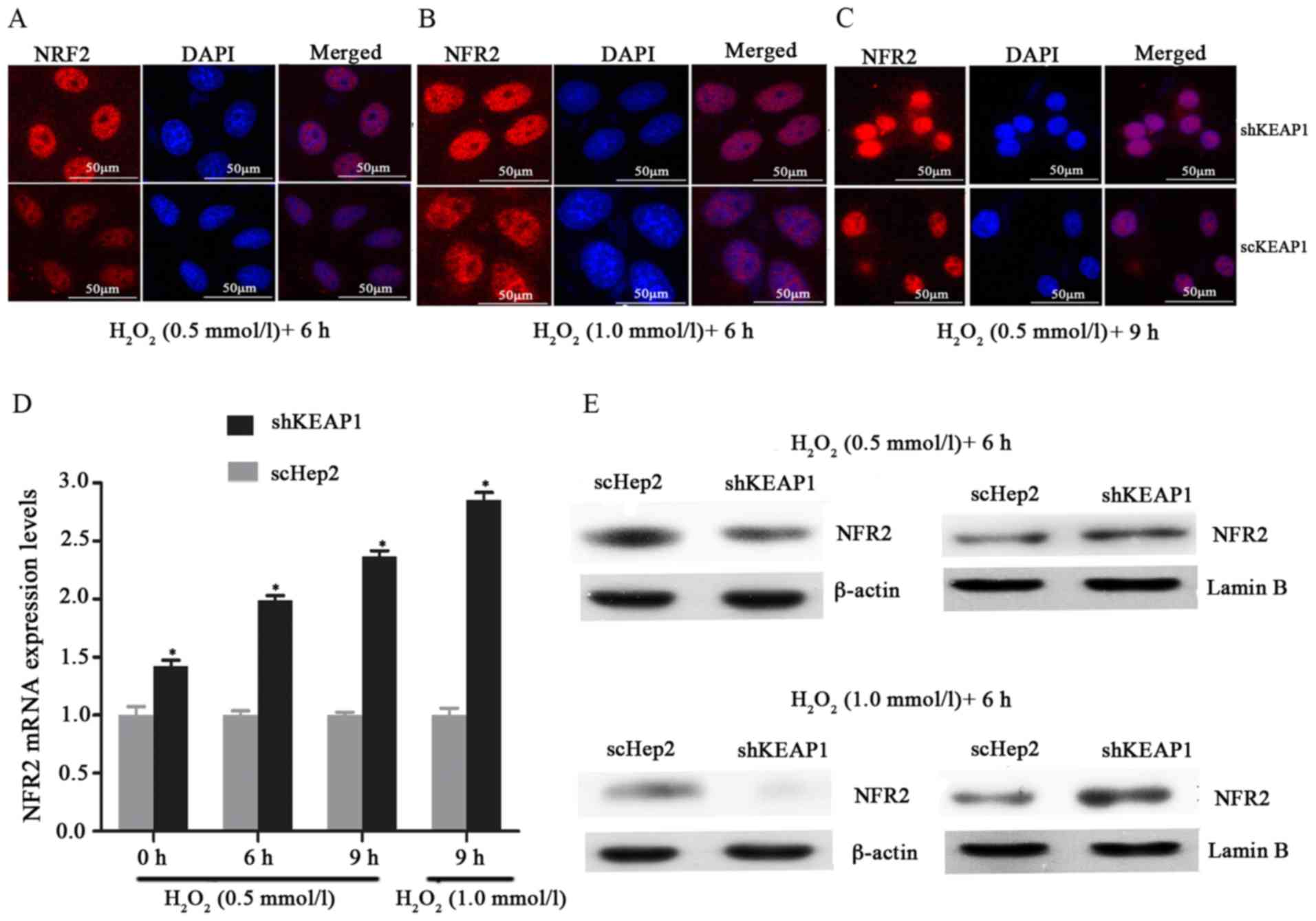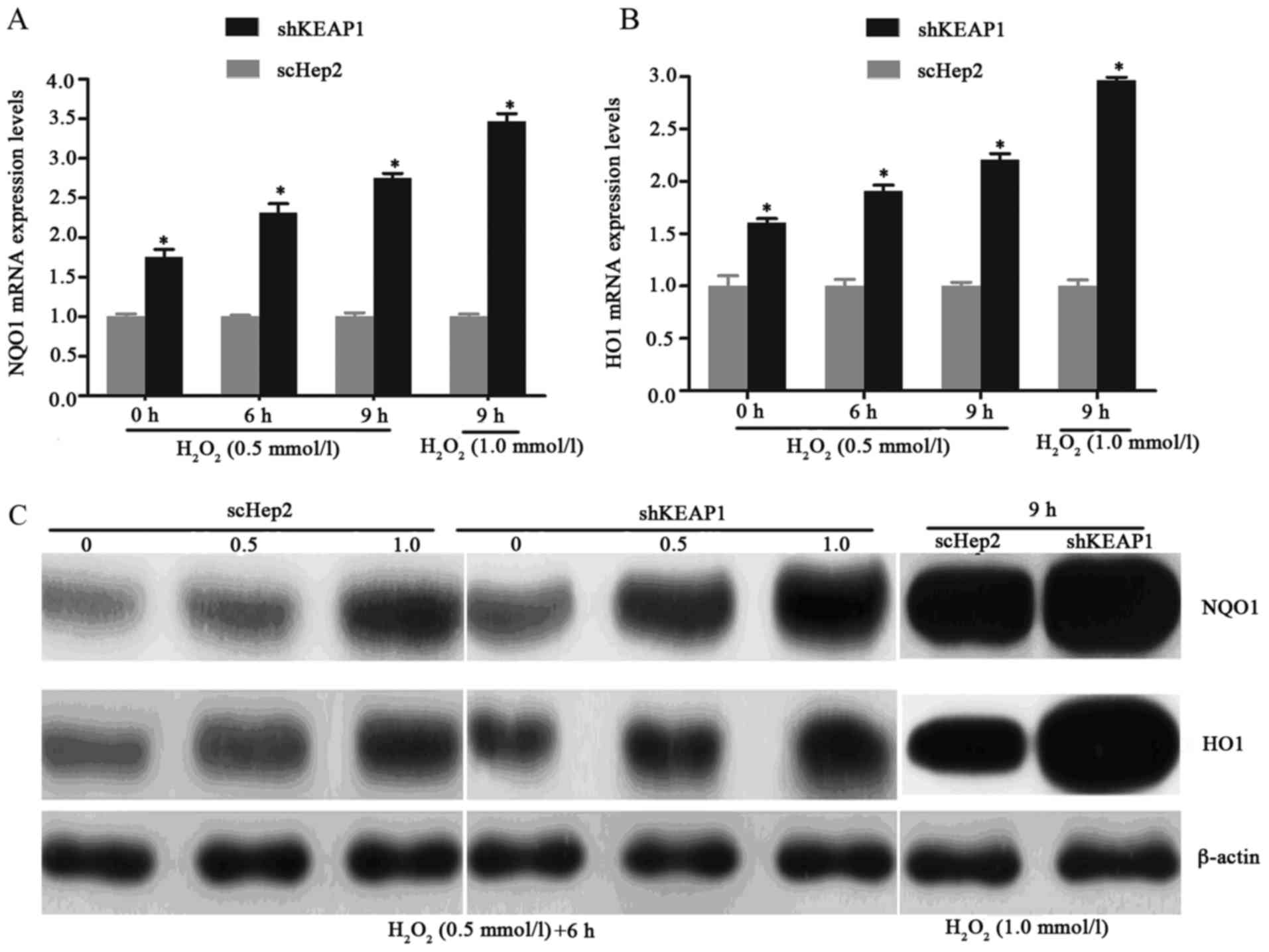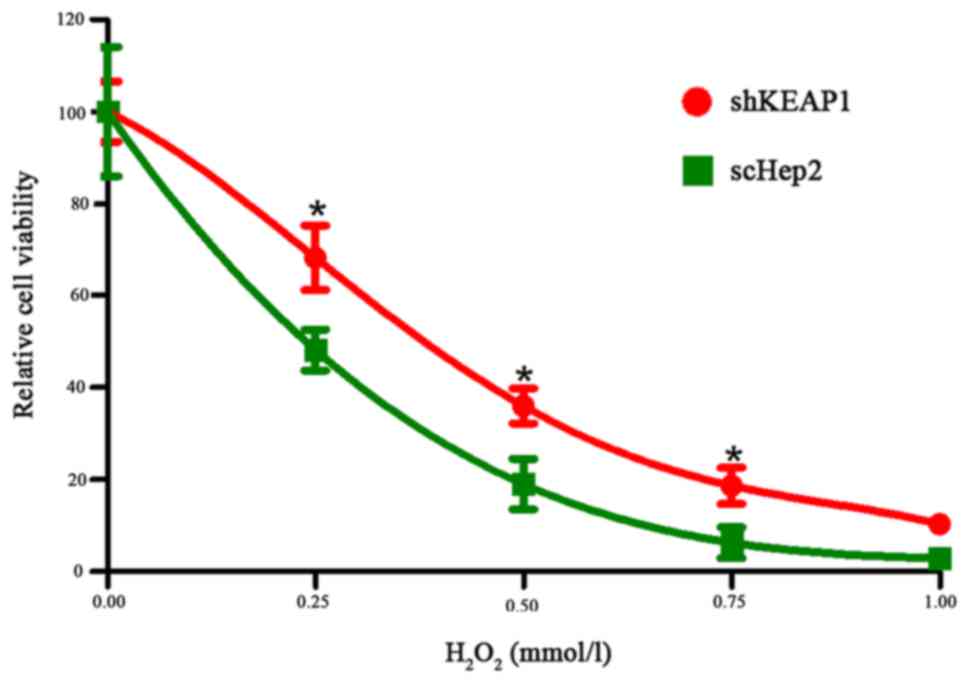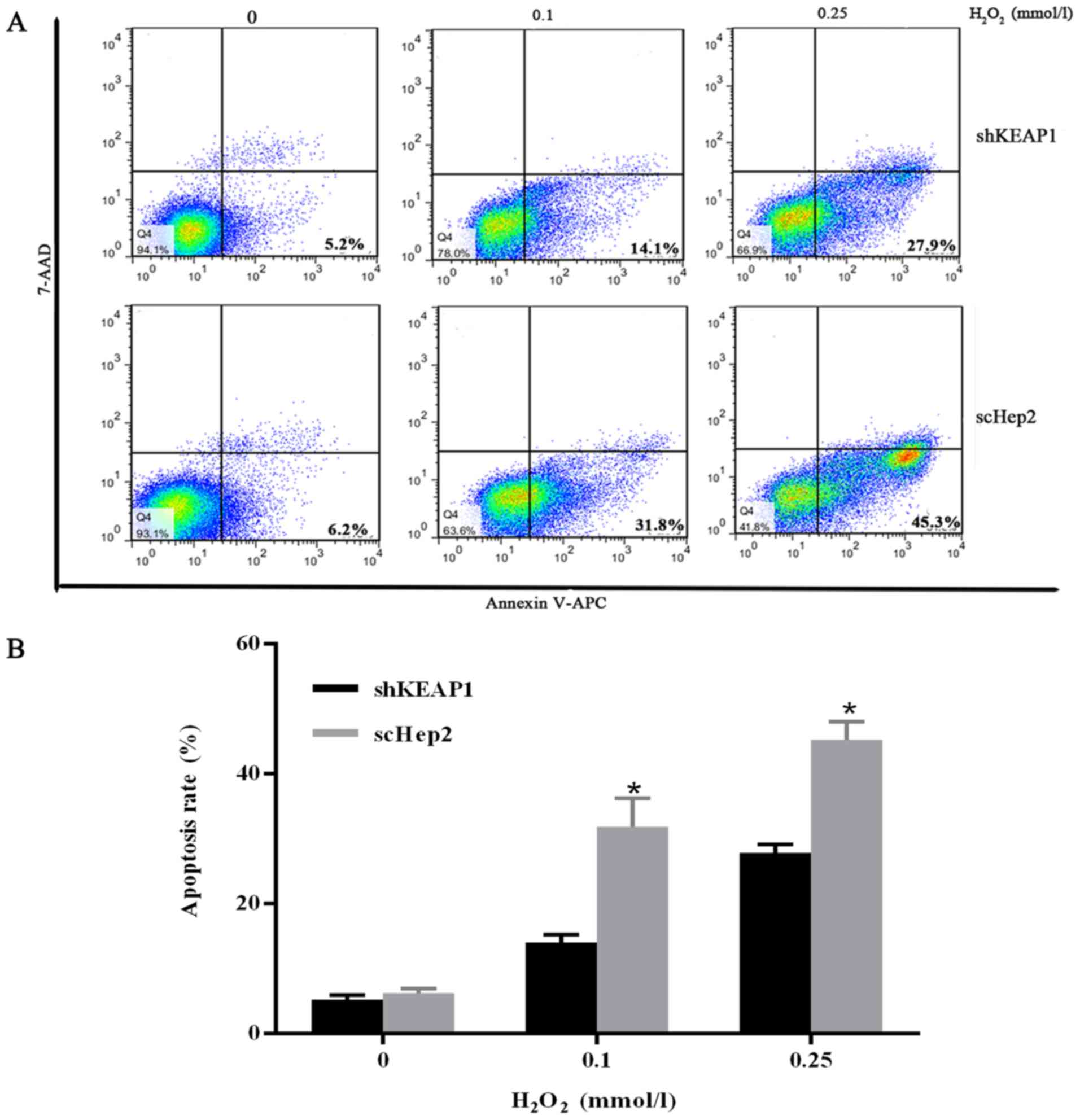|
1
|
Jałoszyński P, Jaruga P, Oliński R,
Biczysko W, Szyfter W, Nagy E, Möller L and Szyfter K: Oxidative
DNA base modifications and polycyclic aromatic hydrocarbon DNA
adducts in squamous cell carcinoma of larynx. Free Radic Res.
37:231–240. 2003. View Article : Google Scholar : PubMed/NCBI
|
|
2
|
Seven A, Civelek S, Inci E, Inci F, Korkut
N and Burçak G: Evaluation of oxidative stress parameters in blood
of patients with laryngeal carcinoma. Clin Biochem. 32:369–373.
1999. View Article : Google Scholar : PubMed/NCBI
|
|
3
|
Dwivedi R, Raturi D, Kandpal N, Dwivedi R,
Singh R and Puri V: Oxidative stress in patients with laryngeal
carcinoma. Indian J Cancer. 45:97–99. 2008. View Article : Google Scholar : PubMed/NCBI
|
|
4
|
Inci E, Civelek S, Seven A, Inci F, Korkut
N and Burçax G: Laryngeal cancer: In relation to oxidative stress.
Tohoku J Exp Med. 200:17–23. 2003. View Article : Google Scholar : PubMed/NCBI
|
|
5
|
Motohashi H and Yamamoto M: Nrf2-Keap1
defines a physiologically important stress response mechanism.
Trends Mol Med. 10:549–557. 2004. View Article : Google Scholar : PubMed/NCBI
|
|
6
|
Uruno A and Motohashi H: The Keap1-Nrf2
system as an in vivo sensor for electrophiles. Nitric Oxide.
25:153–160. 2011. View Article : Google Scholar : PubMed/NCBI
|
|
7
|
Awadallah NS, Dehn D, Shah RJ, Nash
Russell S, Chen YK, Ross D, Bentz JS and Shroyer KR: NQO1
expression in pancreatic cancer and its potential use as a
biomarker. Appl Immunohistochem Mol Morphol. 16:24–31.
2008.PubMed/NCBI
|
|
8
|
Dunn L, Midwinter RG, Ni J, Hamid HA,
Parish CR and Stoker R: New insights into intracellular locations
and functions of heme oxygenase-1. Antioxid Redox Signal.
20:1723–1742. 2014. View Article : Google Scholar : PubMed/NCBI
|
|
9
|
Kensler TW and Wakabayashi N: Nrf2: Friend
or foe for chemoprevention? Carcinogenesis. 31:90–99. 2010.
View Article : Google Scholar : PubMed/NCBI
|
|
10
|
Singh A, Misra V, Thimmulappa RK, Lee H,
Ames S, Hoque MO, Herman JG, Baylin SB, Sidransky D, Gabrielson E,
et al: Dysfunctional KEAP1-NRF2 interaction in non-small-cell lung
cancer. PLoS Med. 3:e4202006. View Article : Google Scholar : PubMed/NCBI
|
|
11
|
Konstantinopoulos PA, Spentzos D,
Fountzilas E, Francoeur N, Sanisetty S, Grammatikos AP, Hecht JL
and Cannistra SA: Keap1 mutations and Nrf2 pathway activation in
epithelial ovarian cancer. Cancer Res. 71:5081–5089. 2011.
View Article : Google Scholar : PubMed/NCBI
|
|
12
|
Kim JH, Choi YK, Lee KS, Cho DH, Baek YY,
Lee DK, Ha KS, Choe J, Won MH, Jeoung D, et al: Functional
dissection of Nrf2-dependent phase II genes in vascular
inflammation and endotoxic injury using Keap1 siRNA. Free Radic
Biol Med. 53:629–640. 2012. View Article : Google Scholar : PubMed/NCBI
|
|
13
|
Wakabayashi N, Itoh K, Wakabayashi J,
Motohashi H, Noda S, Takahashi S, Imakado S, Kotsuji T, Otsuka F,
Roop DR, et al: Keap1-null mutation leads to postnatal lethality
due to constitutive Nrf2 activation. Nat Genet. 35:238–245. 2003.
View Article : Google Scholar : PubMed/NCBI
|
|
14
|
Spanou C, Stagos D, Aligiannis N and
Kouretas D: Influence of potent antioxidant leguminosae family
plant extracts on growth and antioxidant defense system of Hep2
cancer cell line. J Med Food. 13:149–55. 2010. View Article : Google Scholar : PubMed/NCBI
|
|
15
|
Spanou C, Stagos D, Aligiannis N and
Kouretas D: Influence of potent antioxidant leguminosae family
plant extracts on growth and antioxidant defense system of Hep2
cancer cell line. J Med Food. 13:149–155. 2010. View Article : Google Scholar : PubMed/NCBI
|
|
16
|
Jewett A, Wang MY, Teruel A, Poupak Z,
Bostanian Z and Park NH: Cytokine dependent inverse regulation of
CD54 (ICAM1) and major histocompatibility complex class I antigens
by nuclear factor kappaB in HEp2 tumor cel: Effect on the function
of natural killer cells. Hum Immunol. 64:505–520. 2003. View Article : Google Scholar : PubMed/NCBI
|
|
17
|
Livak KJ and Schmittgen TD: Analysis of
relative gene expression data using real-time quantitative PCR and
the 2(-Delta Delta C(T)) method. Methods. 25:402–408. 2001.
View Article : Google Scholar : PubMed/NCBI
|
|
18
|
Suzuki T, Wakai K, Matsuo K, Hirose K, Ito
H, Kuriki K, Sato S, Ueda R, Hasegawa Y and Tajima K: Effect of
dietary antioxidants and risk of oral, pharyngeal and laryngeal
squamous cell carcinoma according to smoking and drinking habits.
Cancer Sci. 97:760–767. 2006. View Article : Google Scholar : PubMed/NCBI
|
|
19
|
Khor TO, Huang MT, Prawan A, Liu Y, Hao X,
Yu S, Cheung WK, Chan JY, Reddy BS, Yang CS and Kong AN: Increased
susceptibility of Nrf2 knockout mice to colitis-associated
colorectal cancer. Cancer Prev Res (Phila). 1:187–191. 2008.
View Article : Google Scholar : PubMed/NCBI
|
|
20
|
Iida K, Itoh K, Kumagai Y, Oyasu R,
Hattori K, Kawai K, Shimazui T, Akaza H and Yamamoto M: Nrf2 is
essential for the chemopreventive efficacy of oltipraz against
urinary bladder carcinogenesis. Cancer Res. 64:6424–6431. 2004.
View Article : Google Scholar : PubMed/NCBI
|
|
21
|
Lister A, Nedjadi T, Kitteringham NR,
Campbell F, Costello E, Lloyd B, Copple IM, Williams S, Owen A,
Neoptolemos JP, et al: Nrf2 is overexpressed in pancreatic cancer:
Implications for cell proliferation and therapy. Mol Cancer.
10:372011. View Article : Google Scholar : PubMed/NCBI
|
|
22
|
Jung KA and Kwak MK: Enhanced
4-hydroxynonenal resistance in KEAP1 silenced human colon cancer
cells. Oxid Med Cell Longev. 2013:4239652013. View Article : Google Scholar : PubMed/NCBI
|
|
23
|
Li K, Zhong C, Wang B, He J and Bi J: Nrf2
expression participates in growth and differentiation of
endometrial carcinoma cells in vitro and in vivo. J Mol Histol.
45:161–167. 2014. View Article : Google Scholar : PubMed/NCBI
|
|
24
|
Ma X, Zhang J, Liu S, Huang Y, Chen B and
Wang D: Nrf2 knockdown by shRNA inhibits tumor growth and increases
efficacy of chemotherapy in cervical cancer. Cancer Chemother
Pharmacol. 69:485–494. 2012. View Article : Google Scholar : PubMed/NCBI
|
|
25
|
Dell'Orco M, Milani P, Arrigoni L,
Pansarasa O, Sardone V, Maffioli E, Polveraccio F, Bordoni M,
Diamanti L, Ceroni M, et al: Hydrogen peroxide-mediated induction
of SOD1 gene transcription is independent from Nrf2 in a cellular
model of neurodegeneration. Biochim Biophys Acta. 1859:315–323.
2016. View Article : Google Scholar : PubMed/NCBI
|
|
26
|
Erlank H, Elmann A, Kohen R and Kanner J:
Polyphenols activate Nrf2 in astrocytes via H2O2, semiquinones, and
quinones. Free Radic Biol Med. 51:2319–2327. 2011. View Article : Google Scholar : PubMed/NCBI
|
|
27
|
Pi J, Qu W, Reece JM, Kumagai Y and
Waalkes MP: Transcription factor Nrf2 activation by inorganic
arsenic in cultured keratinocytes: Involvement of hydrogen
peroxide. Exp Cell Res. 290:234–245. 2003. View Article : Google Scholar : PubMed/NCBI
|
|
28
|
Habib E, Linher-Melville K, Lin HX and
Singh G: Expression of xCT and activity of system xc(−) are
regulated by NRF2 in human breast cancer cells in response to
oxidative stress. Redox Biol. 5:33–42. 2015. View Article : Google Scholar : PubMed/NCBI
|
|
29
|
Chen J, Yu Y, Ji T, Ma R, Chen M, Li G, Li
F, Ding Q, Kang Q, Huang D, et al: Clinical implication of Keap1
and phosphorylated Nrf2 expression in hepatocellular carcinoma.
Cancer Med. 5:2678–2687. 2016. View Article : Google Scholar : PubMed/NCBI
|















